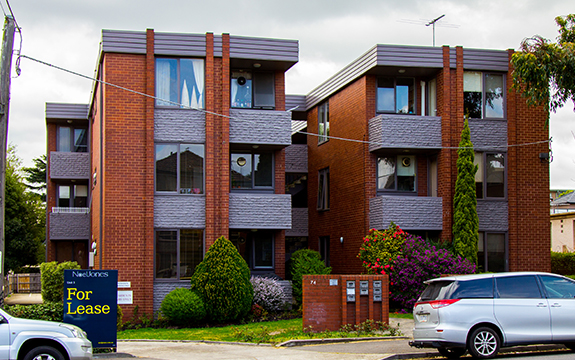An innovative solution to satisfy Melbourne’s housing demand

In Summary
- This article featured in Swinburne’s new ‘Research Impact’ magazine, produced in association with Nature Publishing Group.
An innovative solution to satisfy housing demand in Melbourne as the population expands has been developed by a Swinburne researcher.
Melbourne is a city under pressure. With a population expected to double to around seven million by 2055, there is commensurate pressure on resources, transportation and planning efforts. But current strategies to meet housing demand such as putting up high-rise apartments in ‘brownfield’ zones, piecemeal rebuilding in the suburbs, and the development of vacant rural-urban fringe ‘greenfields’ areas are not delivering sustainable housing.
Swinburne’s Professor Peter Newton believes a solution lies in established ‘greyfields’ suburbs — long-established residential areas within 25 kilometres of the city centre, where the value lies in the land rather than the buildings.
Greyfield suburbs are rich with services, transport, amenities and employment opportunities. But the way these suburbs have expanded and evolved is less ideal. Individual properties are replaced piecemeal with new townhouses typically providing only two to four dwellings, which is insufficient to meet the housing demands or a growing population.
Professor Newton believes these have potential for a more cohesive and sustainable redevelopment if new models and instruments for precinct scale regeneration can be created. He’s exploring these possibilities at Swinburne’s Institute for Social Research in collaboration with the Cooperative Research Centre for Spatial Information (CRCSI).
The Greening the Greyfields (GtG) project identifies the most promising greyfields precincts across the city with ENVISION, software that locates properties with high redevelopment potential. ENVISION develops 3D computer-aided design models of suitable medium-density housing designs for the precinct, assessed for their environmental performance.
The project considers the market and community dynamics necessary to encourage precinct redevelopment. Also taken into account are ways of building a range of cost-effective, low-rise, medium-density housing that retains or improves sustainability in terms of water conservation, waste disposal and recycling, and carbon neutrality.
The benefits of regenerating greyfields precincts include keeping city sizes manageable, preserving greenspace, developing more sustainable and resilient communities, and ensuring affordable housing. Greyfields redevelopment would also save on infrastructure costs and reduce dependence on cars, a significant contributing factor to lack of sustainability in Australian city development.
“By neglecting the regeneration of greyfields, governments are consigning our big cities to less sustainable, liveable and competitive futures,” says Newton.
The GtG project also investigates the types of planning policies that could facilitate more efficient redevelopment of housing in city suburbs.
“This project looks at why we’re not building more medium-density housing in the middle suburbs and what can be done about it. What design, construction, manufacturing and labour force innovations can be brought to bear? What new institutional and governance arrangements need to be established?”
The answers to these questions aim to align with nation-wide objectives for sustainable development of Australia’s expanding cities.

